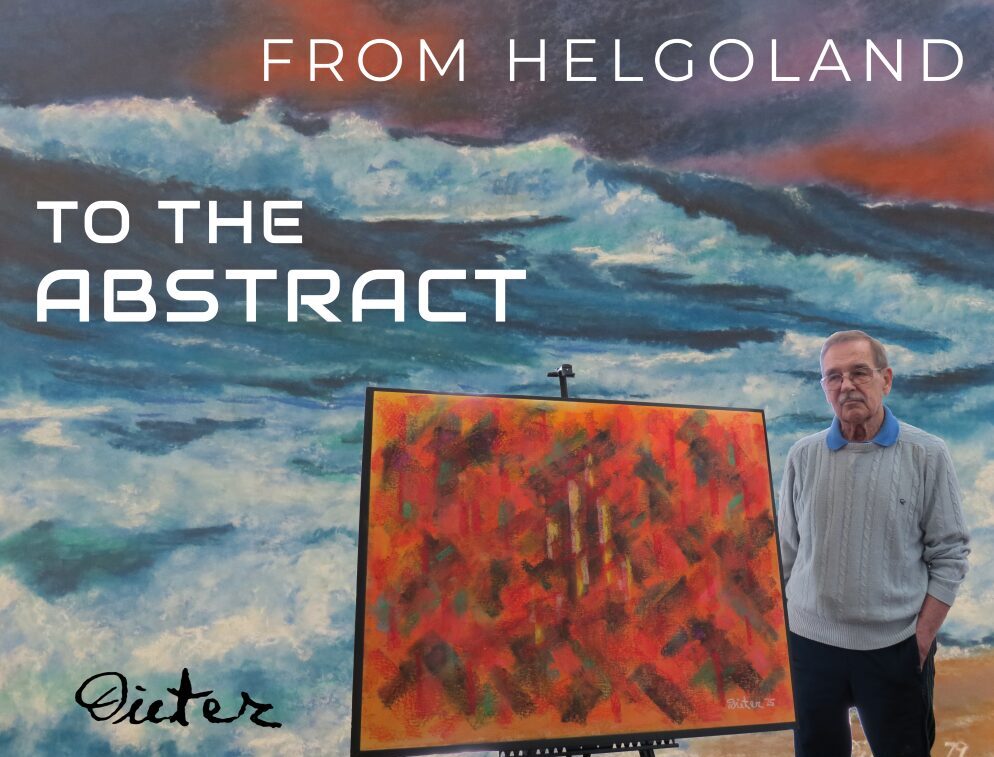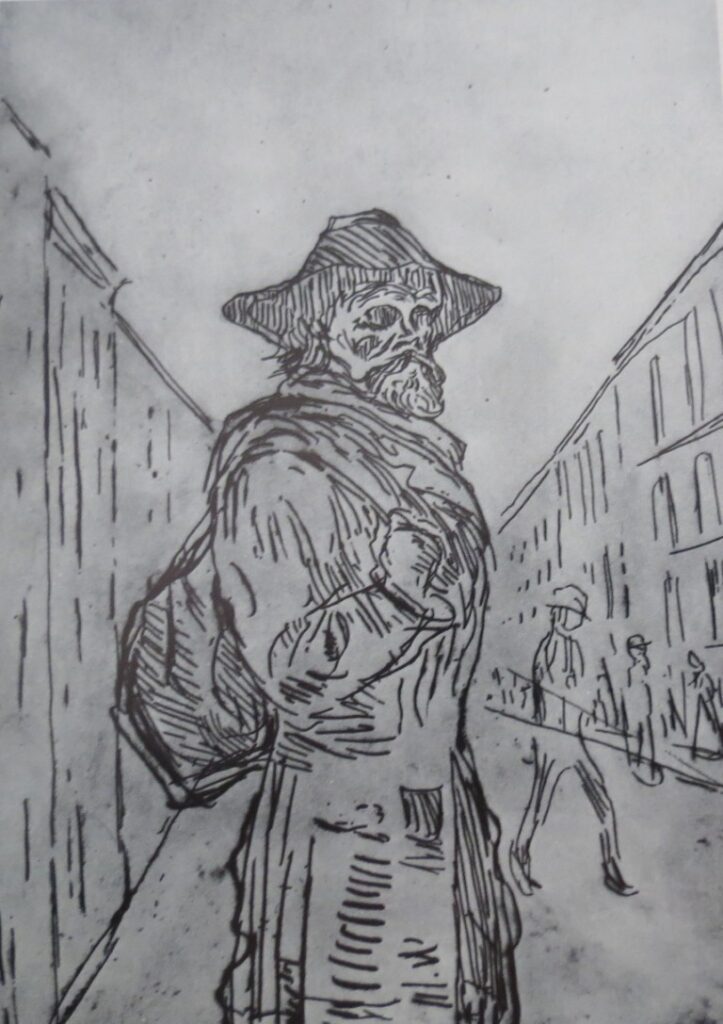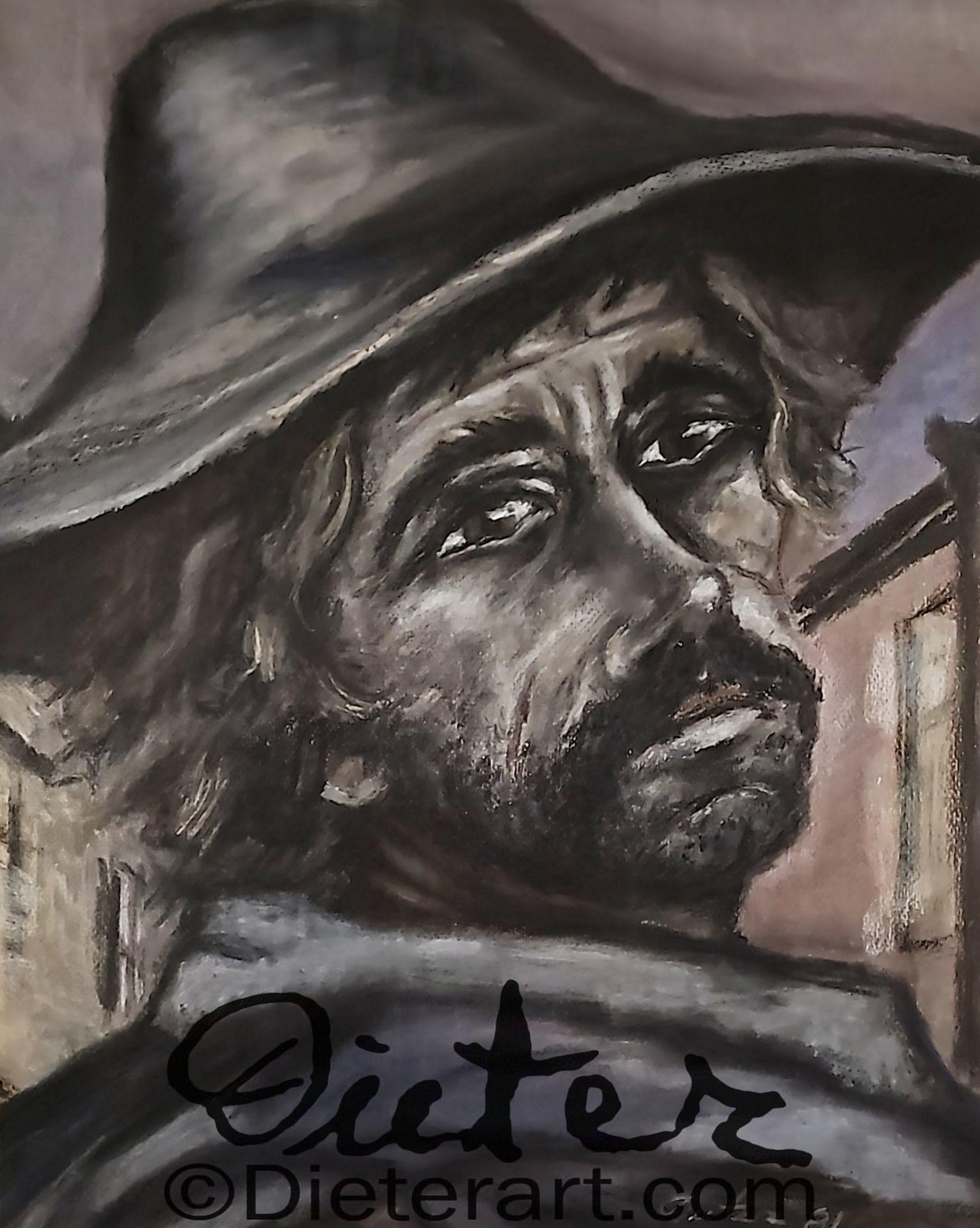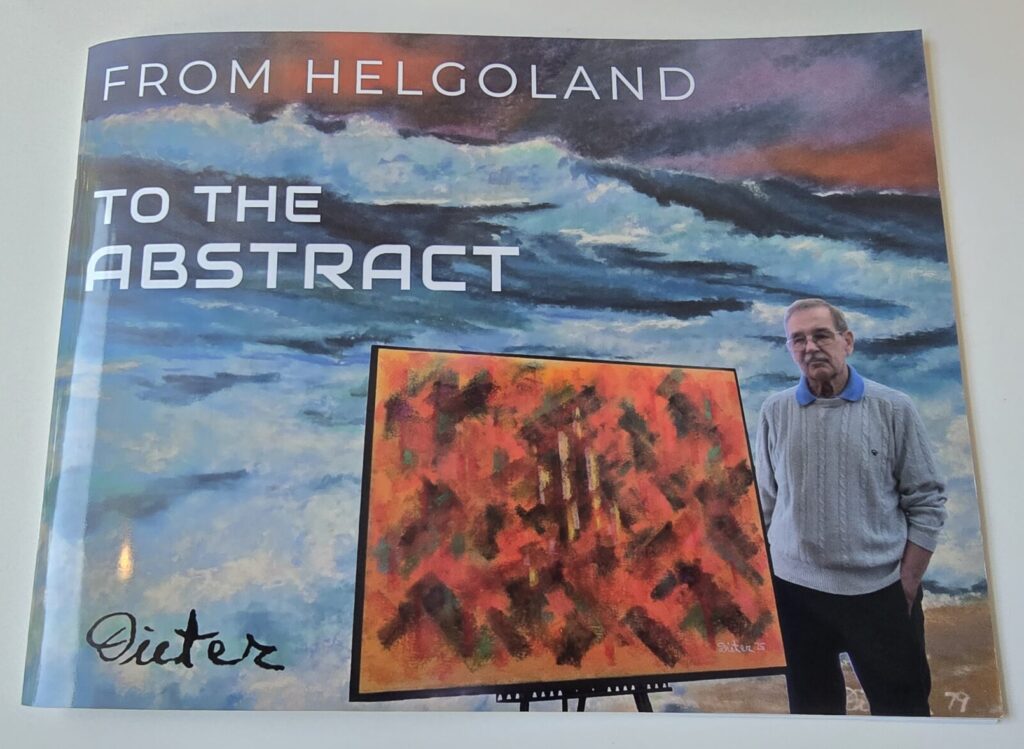When I finished the Helgoland Book, the question became, “What do I do next?”.
Eventually the answer was, why not try the abstract. Over the decades I have refrained from painting abstract. The reason is, that I have met too many so-called artists that would only paint abstract, they were unable to paint a likeness or copy someone’s masterpiece. During my career in the arts, I earned a living as a construction project manager, I have used different styles of painting. In the early 1980’s I visited the Edvard Munch (The Scream) exhibition at the National Gallery of Art. It was fascinating and it immediately influenced my work.


I did a self-portrait based on his etching called the “Rag Picker” followed by three other paintings called “Fear and Resignation”, “Rejection”, and “Sorrow”, where I used some of the symbols and subdued colors for expression. You will find the pictures at the beginning of the book.
Earlier this year I finished three more Helgoland paintings to lead into my abstract adventure. What did I let myself get into? We are streaming and therefore it is easy to research and view videos on all kinds of subjects. For the first four months, while painting, I saw videos about the abstract art world including the views of art critics both pro and con. It is a wide field, but I became quickly enthralled with the New York Group of Abstract Expressionists of the 1940’s and 1950’s. They were a very fascinating and successful group that included names like Newman, de Kooning, Jackson Pollock and Mark Rothko. All painted on large canvases, Pollock known for dripping paint on his canvases; they called him Jack the Dripper. Mark Rothko used large and super large panels. He used paint thinner to make his paintings more transparent. To me he is by far the most fascinating character of the group. His paintings consist mainly of two large fields intersected or framed by horizontal and vertical lines of various widths and various colors. However, the lines are delicately and finely and sometimes fuzzy, blended into each other. He claimed that each of his paintings resulted from a spiritual process. I am a skeptic, however at the end of one of the videos about him they show a chapel built especially to house his super large dark blue panels that is very revealing. I had the immediate desire to experience the feeling of standing in front of the large blue paintings, strange, but sometimes it is as simple as that, is there more toit? He certainly thought so. Rothko suffered from lifelong depression; it all ended with him taking his own life.
I have to agree with Jackson Pollock, that part of creating abstract paintings is the physical work itself, in his case, canvas on the floor using a big brush or drippings, the experience of letting go, just doing it and seeing what happens.
Working with pastels forces me to use a different approach. I just have my pastels and reworkable spray and a clear glaze spray and I am limited in the size of my paintings. The standard size in this collection is 17 ½” x 14 ½” in a 24” x 18” size matting. (To be put under glass) I did five large paintings 40” x 32” on a matting board, and thanks to my good friend Jim Marshal the artisan whom I approached for advice and who came up with the idea to glue the painted matting to a particle board and then frame it and that is what he did. The painting is sprayed with a clear glaze and does not need to be put under glass.
What is my approach to start an abstract painting? My reworkable spray is my best friend. To start I just cover the entire paper with one, two or three colors and then intuition takes over. The brain is involved but I don’t think it is an intellectual process. It is, like I said, rather intuitive. You paint, a thought comes from your brain, which may change your painting in a flash, the workable spray always allows you to do that. Sometimes I use a different approach and start with various forms, but the basic process is the same.
My large paintings can stay displayed on their own. My small paintings are created in groups of two to four paintings based on colors, form and movement, you can follow them in the order they are displayed in the book. For the last eight paintings in the book, you will note that I used a different approach. It suddenly came to me and I like it.
There are three paintings that may not fall into the abstract category, but I put those in for color. One painting started as an abstract, then I added a number of vertical lines and unabstracted it and according to my daughter, Stephanie it turned into a walk in the woods. That leaves the enigma painting that is not what it seems to be. Find it and let me know what you see. Yes, the last painting was mistakenly signed upside down.

My Helgoland book was well received except maybe by the Mayor (Burgermeister) of Helgoland, I never heard from him. My hope is that everyone will enjoy the new book and get something out of it. It is the end of my current or more recent journey in the Abstract Art World, it was a lot of work, but also a lot of fun.
Now I am 91 years old, and I wonder what is in store for me next. Since I had covid I suffer from chronic fatigue, thanks to Dr. Fauci who took a pardon from President Biden for a crime he said he did not commit. I always loved my garden, the plants and flowers, but yard work is out of the question and that hurts.
I am grateful that my brain still works reasonably well, and I can paint even though that has also become a bit more difficult. The Abstract Art Period ended to be followed by “Pop Art” (Andy Warhol) No I am not going there.
What do I do next? “Don’t know” Que Sara Sara!

PS: How did Ellis, my great grandson the little rascal’s image get on to the back cover?

